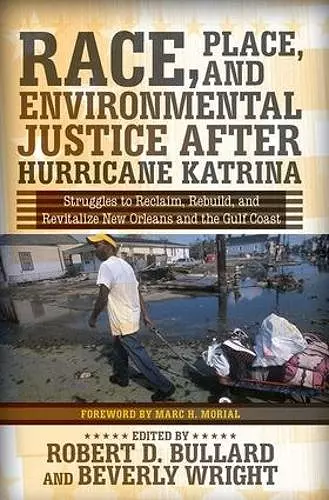Race, Place, and Environmental Justice After Hurricane Katrina
Struggles to Reclaim, Rebuild, and Revitalize New Orleans and the Gulf Coast
Robert D Bullard author Beverly Wright author
Format:Paperback
Publisher:Taylor & Francis Inc
Published:10th Feb '09
Currently unavailable, and unfortunately no date known when it will be back
This paperback is available in another edition too:
- Hardback£145.00(9780367097141)

On August 29, 2005, Hurricane Katrina made landfall near New Orleans leaving death and destruction across the Louisiana, Mississippi, and Alabama Gulf Coast counties. The lethargic and inept emergency response that followed exposed institutional flaws, poor planning, and false assumptions that are built into the emergency response and homeland security plans and programs. Questions linger: What went wrong? Can it happen again? Is our government equipped to plan for, mitigate, respond to, and recover from natural and manmade disasters? Can the public trust government response to be fair? Does race matter? Racial disparities exist in disaster response, cleanup, rebuilding, reconstruction, and recovery. Race plays out in natural disaster survivors' ability to rebuild, replace infrastructure, obtain loans, and locate temporary and permanent housing. Generally, low-income and people of color disaster victims spend more time in temporary housing, shelters, trailers, mobile homes, and hotels - and are more vulnerable to permanent displacement. Some 'temporary' homes have not proved to be that temporary. In exploring the geography of vulnerability, this book asks why some communities get left behind economically, spatially, and physically before and after disasters strike.
"There have been many books written about Hurricane Katrina but none has the range and power of Race, Place, and Environmental Justice After Hurricane Katrina. Bullard, Wright, and the contributors cover all the issues: the pre-existing social and environmental injustices, the lack of preparation for disaster, and the skewed political and economic structure that made sure that Katrina's wrath would be felt most sharply in low-income communities of color. But most significantly, they offer one of the most detailed, analytical, and rigorous looks at the aftermath: the toxic soup left behind, the economic, physical and social challenges of rebuilding, and the shifting demographics and politics of New Orleans. This is a must-read for anyone concerned with the devastating effects Katrina had on Louisiana and the nation, and a worthy anchor text for courses on environmental justice, social inequality, and the American future." -Manuel Pastor, University of Southern California "Race, Place, and Environmental Justice reveals how the political disasters confronting New Orleans before Katrina and in the rebuilding process afterwards wreaked far more damage on the city than the storm itself, a context that unfortunately prevails in virtually every major US city." -Gregory D. Squires, George Washington University
ISBN: 9780813344249
Dimensions: unknown
Weight: 430g
314 pages